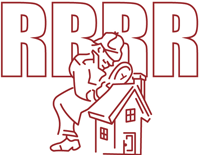How to Stop Roof Leaks for Good: Effective Solutions for Brisbane Homeowners
Tired of constant roof leaks? We’ve got you covered! Protecting your home from roof leaks is essential to maintain its value and prevent costly water damage. This guide will provide you with effective solutions to stop roof leaks for good, ensuring your Brisbane home stays safe and dry.
Identify the Source of Your Roof Leak
Finding the exact source of a leaky roof can be challenging but is crucial for a successful repair. Common signs of roof leaks include water stains on ceilings, mold growth, and damp walls. Here are steps to help you pinpoint the leak:
- Inspect the Roof: Look for damaged or missing shingles, small holes, or cracks in the roofing material. Pay attention to areas around roof and gutter installations, as these are common leak points.
- Check the Attic: During heavy rain, examine the attic for dripping water or wet insulation. Use a flashlight to spot water trails leading to the source.
- Test for Leaks: If you can’t find the leak visually, use a garden hose to simulate rain. Spray different sections of the roof while someone inside checks for water penetration.
Common Leak Sources
Understanding common leak sources can help you identify issues more quickly. Here are some frequent culprits:
- Damaged Shingles: Cracked, curled, or missing shingles can allow water to seep into your roof.
- Flashing Issues: Flashing around chimneys, vents, and skylights can deteriorate over time, leading to leaks.
- Valleys: The areas where two roof planes meet, called valleys, are prone to leaks if not properly sealed.
- Roof Vents: Cracked housings on plastic roof vents and broken seams on metal vents can let water through.
- Gutters and Downspouts: Clogged or damaged gutters can cause water to overflow and seep into the roof edges.
DIY Roof Leak Repair Solutions
For minor leaks, you can try some do-it-yourself repairs. Here are effective methods to fix a leaking roof:
Patch Small Holes
Small holes can often be the culprit behind persistent leaks. Here’s how to patch them up:
- Clean the Area: Remove any debris around the hole.
- Apply Roof Sealant: Use a high-quality roof sealant to cover the hole. Ensure the sealant extends a few inches beyond the hole for a secure fix.
- Reinforce with Patch: For extra security, place a piece of metal roofing or a shingle over the sealed hole and secure it with roofing nails.
Fixing Flashing Issues
Flashing around chimneys, vents, and skylights can deteriorate over time, causing leaks. To repair flashing:
- Remove Old Flashing: Carefully take off the damaged flashing.
- Install New Flashing: Cut a new piece of flashing to fit and secure it in place with roofing nails.
- Seal the Edges: Use roof sealant to cover the edges and prevent water from seeping underneath.
Replacing Damaged Shingles
Damaged or missing shingles are a common source of leaks. Follow these steps to replace them:
- Remove the Old Shingle: Lift the damaged shingle and remove the nails holding it in place.
- Slide in the New Shingle: Align the new shingle with the existing ones and secure it with roofing nails.
- Seal the Nails: Apply roof sealant over the nail heads to prevent water ingress.
Resealing Roof Vents
Roof vents can develop leaks if their seals are compromised. Here’s how to reseal them:
- Inspect the Vent: Look for cracks or gaps around the vent housing.
- Remove Old Caulk: Scrape away any old, cracked caulk.
- Apply New Caulk: Apply a generous bead of roofing caulk around the vent base, ensuring all gaps are filled.
Call a Professional for Roof Leak Repair
While DIY solutions can be effective for minor issues, significant or persistent leaks often require professional intervention. Here’s why you should consider hiring a roofing expert:
Expertise and Experience
Professional roofers have the expertise to diagnose and repair leaks accurately. They can identify underlying issues that may not be visible to the untrained eye, ensuring a long-term fix.
Quality Materials
Roofing professionals use high-quality materials that are specifically designed for the harsh Queensland climate. This includes durable roof sealants and weather-resistant roofing materials.
 Safety
Safety
Roof repairs can be dangerous, especially on steep or high roofs. Professionals have the necessary safety equipment and training to carry out repairs safely.
Cost-Effective in the Long Run
While hiring a professional might seem more expensive initially, it can save you money in the long run by preventing recurring issues and ensuring the repair is done correctly the first time.
Choosing the Right Professional
When selecting a roofing contractor, consider the following:
- Experience and Credentials: Look for a contractor with extensive experience and relevant certifications.
- References and Reviews: Check reviews and ask for references to gauge their reliability and quality of work.
- Warranty: Ensure they offer a warranty on their work, which indicates confidence in their services.
- Detailed Estimates: Get detailed written estimates to understand the scope of work and associated costs.
Preventative Roof Maintenance to Stop Leaks
Preventing roof leaks is more cost-effective than repairing them. Regular maintenance can extend the life of your roof and prevent future issues. Here are some tips:
Regular Inspections
Schedule regular roof inspections, especially after heavy rain or storms. Look for signs of damage such as cracked tiles, worn-out sealant, and debris buildup in gutters.
Clean Gutters and Downspouts
Clogged gutters can cause water to back up and seep under the roofing material. Clean your gutters and downspouts regularly to ensure proper drainage.
Trim Overhanging Branches
Overhanging tree branches can damage your roof during storms. Trim them back to prevent leaves and branches from accumulating on the roof.
Apply Roof Coatings
Consider applying a protective roof coating. These coatings can extend the life of your roof by providing an additional layer of protection against UV rays and water damage.
Regular Maintenance Plan
Develop a regular maintenance plan that includes:
- Seasonal Inspections: Conduct thorough roof inspections at least twice a year, in spring and autumn.
- After-Storm Checks: Inspect the roof after major storms to catch any damage early.
- Professional Maintenance: Hire professionals for annual maintenance checks to ensure all potential issues are addressed.
Benefits of Preventative Maintenance
Preventative maintenance offers several benefits, including:
- Cost Savings: Regular maintenance can prevent minor issues from becoming major, costly repairs.
- Longevity: Well-maintained roofs last longer, providing better value for your investment.
- Aesthetic Appeal: Keeping your roof in good condition enhances the overall look of your home.
- Peace of Mind: Knowing your roof is in good shape provides peace of mind, especially during heavy rain seasons.
Comprehensive Solutions to Stop Roof Leaks for Good
Stopping roof leaks for good requires a combination of timely repairs and regular maintenance. Whether you’re patching small holes, fixing flashing, or replacing shingles, taking action promptly can save you from more significant issues down the line. For persistent or severe leaks, don’t hesitate to call a professional roofer to ensure a thorough and lasting repair.
Ready to protect your home from roof leaks? Contact Brisbane Tile Roof Restorations for expert roof repair and maintenance services. With our experienced team and top-quality materials, we’ll keep your roof in excellent condition and your home safe and dry.
3-Step Process to Fix Roof Leaks
- Identify the Leak: Inspect your roof and attic to find the source of the leak.
- DIY or Professional Repair: Choose between DIY repairs for minor issues or professional services for significant leaks.
- Preventative Maintenance: Regularly inspect and maintain your roof to prevent future leaks.

